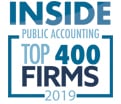Schedule A Changes
All public charities must check a box on Schedule A indicating why they are a public charity, and based upon that, may have to complete one of two possible numerical support tests to prove public support over a five-year period including the current year. Certain organizations, such as schools and colleges, hospitals and Section 509(a)(3) supporting organizations do not have to complete either of the support schedules. Supporting organizations are exactly what has caused the Schedule A to expand this year. The Internal Revenue Service (IRS) and Congress see significant opportunity for abuse with these organizations and have decided to utilize the Schedule A to gather a large amount of information from them to determine if they are in compliance. Other (non-supporting) organizations will see no change to the information required on Schedule A.As the name implies, supporting organizations are organized to provide financial or programmatic support for one or more publically supported organizations. There are four types of supporting organizations: Type I, Type II, Type III Functionally Integrated and Type III Non-Functionally Integrated. Type I and Type II organizations are both controlled by the supported organization(s) while both Type III organizations are not. The Type III organizations (especially Non-Functionally Integrated Type III’s) pose the most risk in the eyes of the IRS and Congress. Thus, Type III Non-Functionally Integrated organizations are subject to a set of rules very similar to private foundations in terms of making minimum distributions to their supported organization(s). All supporting organizations are subject to a variety of rules concerning transactions with, and control by, disqualified persons. Some supporting organizations are subject to the private foundation excess business holding rules of Sec. 4943.
The 2014 Schedule A has a battery of questions for all supporting organizations regardless of type that go to the heart of the various rules governing them. However, for Type III Non-Functionally Integrated organizations, there are two pages of fairly complex financial data required in order to prove that distributions have been made at the proper level.
All supporting organizations should take a careful look at the new Schedule A so they are not caught by surprise by the disclosures required. Supporting organizations may wish to discuss their status (type) with outside advisors before completing the various parts of Schedule A.
Other 2014 Form 990 and Schedule Changes
Part VII and Schedule J Compensation: The Form 990 and Schedule J instructions now clearly state that any deferred income actually paid within 2½ months of the end of the calendar year included in the fiscal year being reported, and which are included in reportable income (W-2) on Form 990, does not get reported as deferred income on Form 990 Part VII or on Schedule J.
Group Returns: In Form 990 Appendix E, Group Returns, new instructions are provided for group returns with Section 509(a)(3) supporting organizations.
Schedule L Transactions with Interested Persons: This four part schedule discloses various transactions between nonprofit organizations and various interested persons (“insiders”). Previously, each section had slightly different definitions for interested persons. The 2014 Schedule L instructions now say that the definition for insiders is “harmonized” for Parts II, III, and IV with some special definitions still being applicable to Part III, Grants or Assistance Benefiting Interested Persons. Additionally, for Part IV, Business Transactions with Interested Persons, transactions with publicly traded companies in the ordinary course of business, on the same (or better for the organization) terms as it offers to the general public, are excluded from being reported here.
The IRS expects organizations to make a reasonable effort to obtain information about such transactions with interested persons. For 2014, the reasonable effort definition has been harmonized for all four types of transactions, so that the same efforts will pass muster for each. An example of a reasonable effort is for the organization to distribute a questionnaire annually to each person it believes to be an interested person requesting information relevant to determining if the transaction is reportable. See Schedule L instructions for more information.
Click here for more information on Form 990 preparation. Or, please contact Amanda James, CPA by calling (334) 887-7022 or by leaving a message below.







